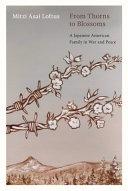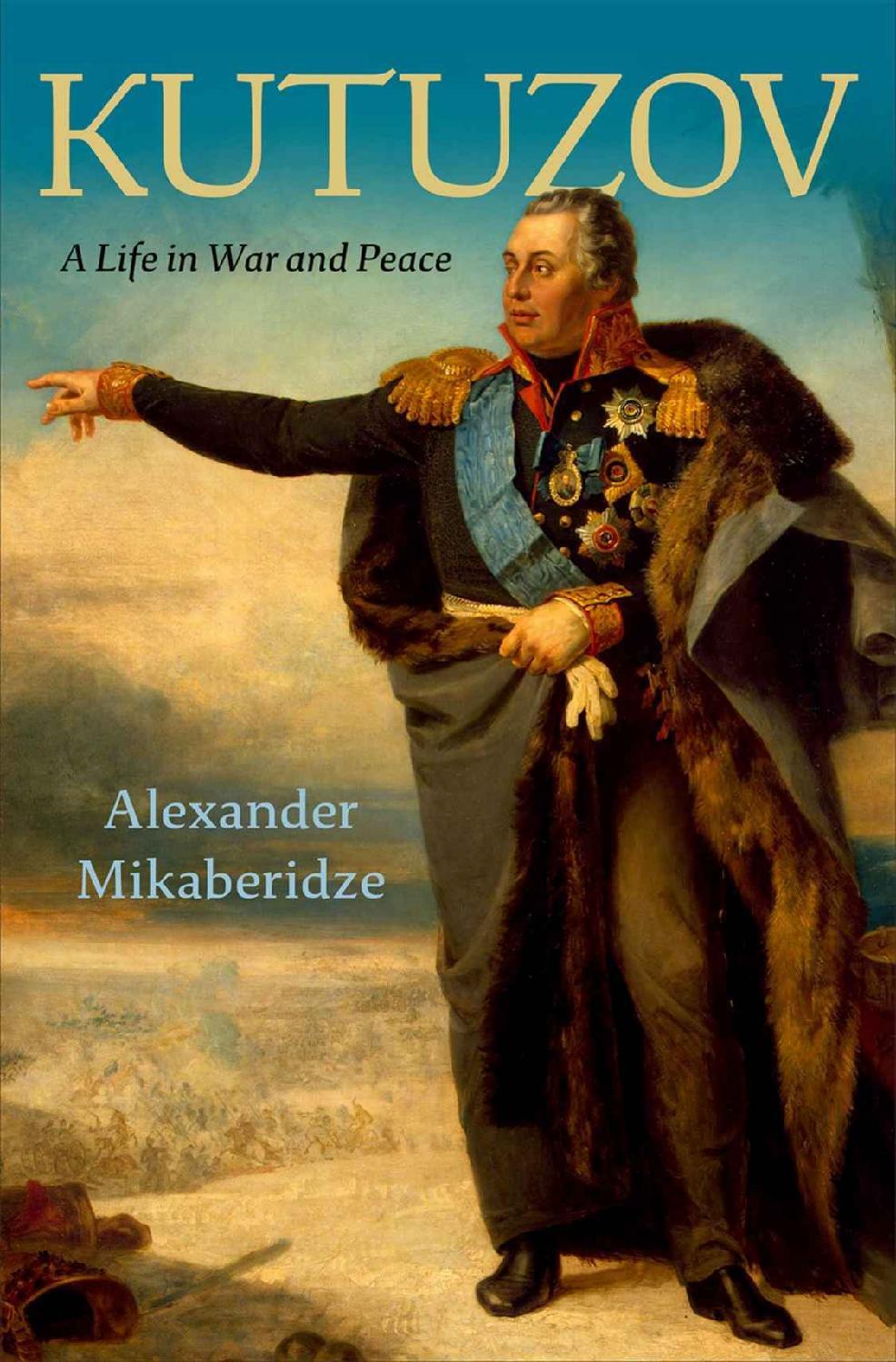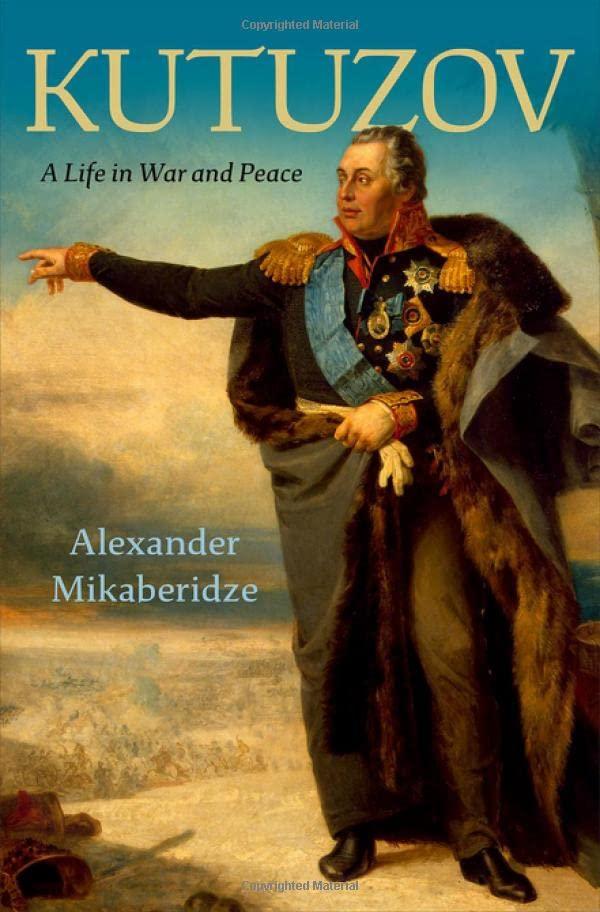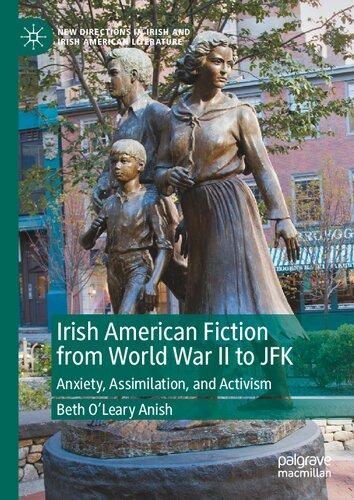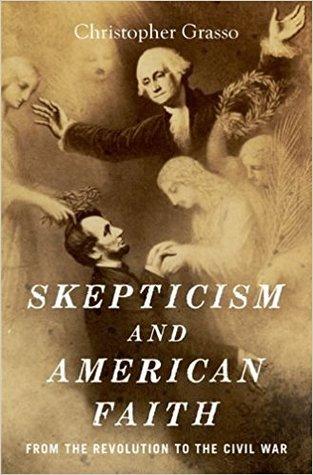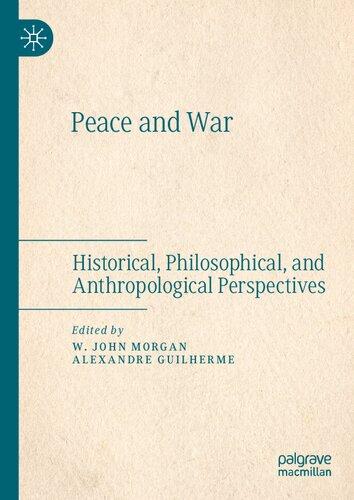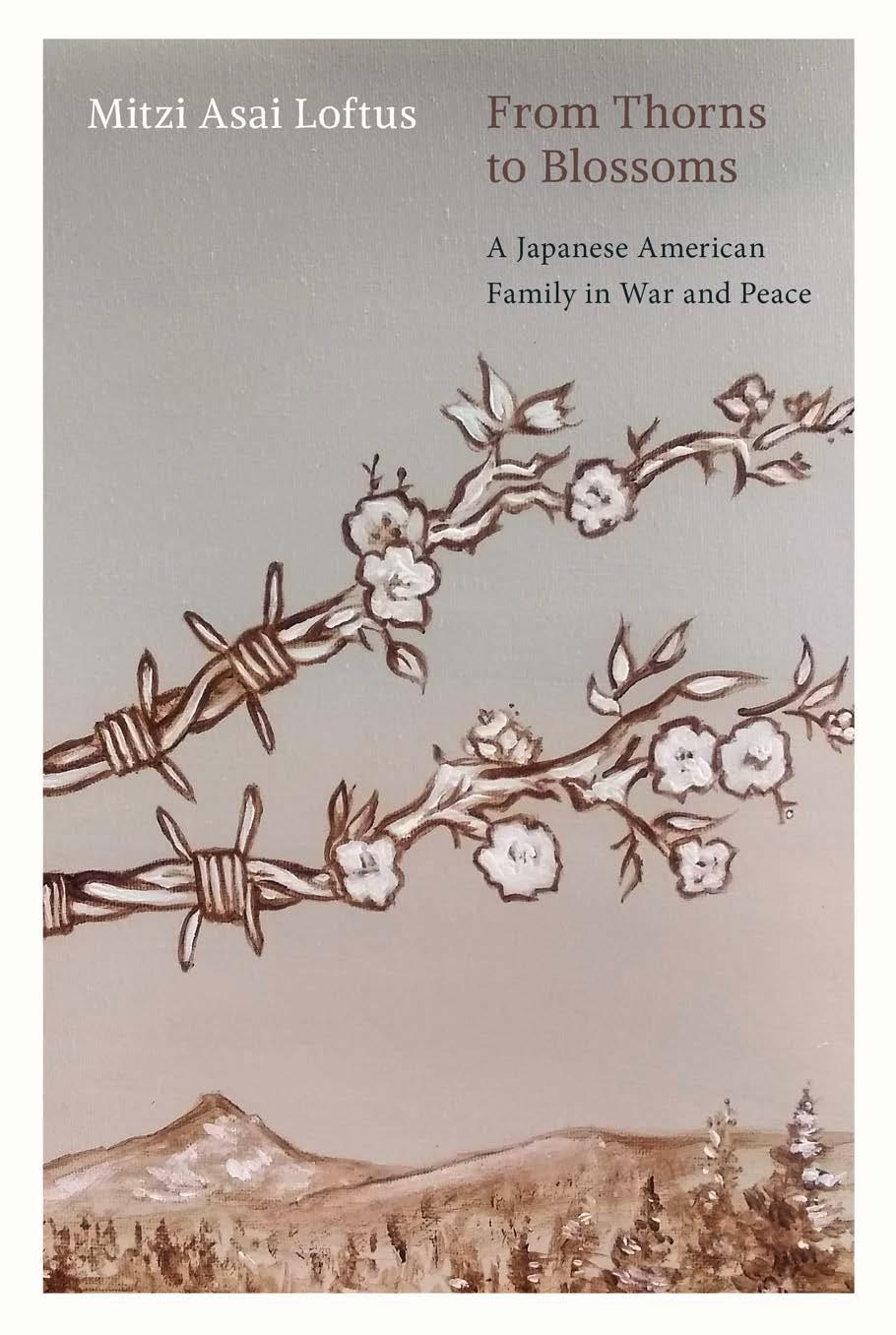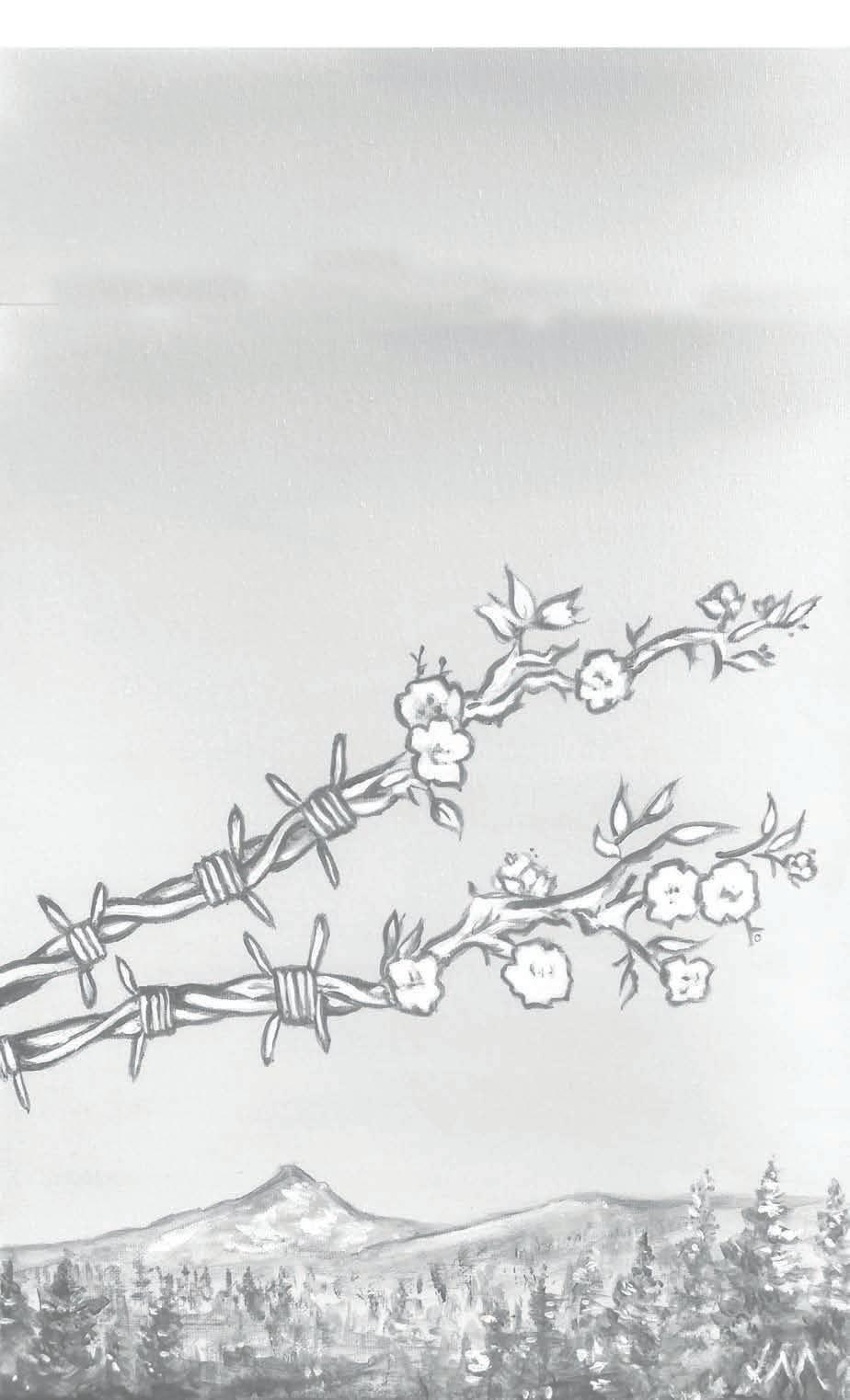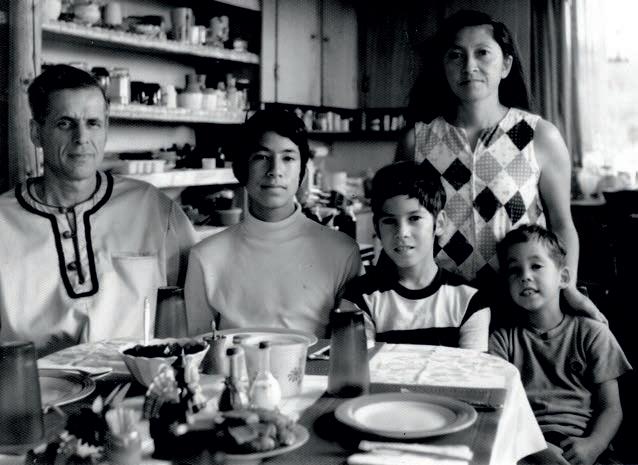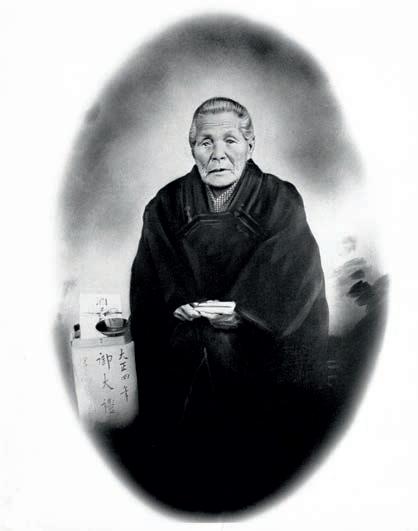From Thorns to Blossoms
A Japanese American Family in War and Peace
Oregon State University Press Corvallis
Oregon State University Press in Corvallis, Oregon, is located within the traditional homelands of the Mary’s River or Ampinefu Band of Kalapuya. Following the Willamette Valley Treaty of 1855, Kalapuya people were forcibly removed to reservations in Western Oregon. Today, living descendants of these people are a part of the Confederated Tribes of Grand Ronde Community of Oregon (grandronde. org) and the Confederated Tribes of the Siletz Indians (ctsi.nsn.us).
Library of Congress Cataloging-in-Publication Data
Names: Loftus, Mitzi Asai, 1932– author
Title: From thorns to blossoms : a Japanese American family in war and peace / Mitzi Asai Loftus, with David Loftus.
Other titles: Made in Japan and settled in Oregon | Japanese American family in war and peace
Description: Corvallis : Oregon State University Press, [2024] | Original title “Made in Japan and settled in Oregon” published in 1990. | Includes bibliographical references.
Identifiers: CCN 2024000999 | ISBN 9781962645058 (trade paperback) | ISBN 9781962645065 (ebook)
Subjects: LCSH: Loftus, Mitzi Asai, 1932- | Asai family. | Japanese American families—Oregon—Hood River. | Japanese American women—Oregon— Hood River—Biography. | Japanese Americans—Oregon—Hood River— Biography. | Japanese Americans—Forced removal and internment, 1942-1945— Personal narratives. | Hood River (Or.)—Biography.
Classification: CC F884.H7 L64 2024 | DDC 979.5/61 [B]—dc23/eng/20240207
LC record available at https://lccn.loc.gov/2024000999
∞ This paper meets the equirements of ANSI/NISO Z39.48-1992 (Permanence of Paper).
© 2024 Mitzi Asai Loftus and David Loftus. Another version of this book was originally published in 1990.
All rights reserved.
First published by Oregon State University Press in 2024.
Printed in the United States of America
Oregon State University Press
121 TheValley Library
Corvallis OR 97331-4501
541-737-3166 • fax 541-737-3170 www.osupress.oregonstate.edu
For my parents, Sagoro and Matsu Ito Asai, who lived extraordinary lives and lived them well, and whose influence on our lies continues long after their deaths more than fifty ears ago. Though nonverbal interest in our activities, encouragement in our effots, and instruction through the model of their day-today lives, they continue to enrich our lives today. It is likely their unspoken hopes were that we would have a positive effect on our fellw human beings.
As the eighth and last of their children, I further dedicate this book to the third, fourth, and fifth generations of this family, in the hope that they will understand and appreciate the rich legacy left to them by my parents.
Contents
Preface ix
chapter 1. What Are You? 1
chapter 2. Pa and Ma in the New World 6
chapter 3. Return Visit to Japan 19
chapter 4. “Midhusband” and Parenting Eight Children 26
chapter 5. Family Life and Training 43
chapter 6. Father as Zen 52
chapter 7. World War II 61
chapter 8. Tule Lake “Relocation Camp” 84
chapter 9. Heart Mountain “Relocation Camp” 99
chapter 10. We Go Home at Last 116
chapter 11. TheYears of Social Isolation 148
chapter 12. The 1950s 16
chapter 13. Masako 174
chapter 14. Fulbright Teacher in Japan 186
Epilogue 199
Notes 207
About the Authors 217
Preface
Thisbook is the personal story of an American child of Japanese immigrants, an effot to further record a family history introduced previously with my 1990 book, Made in Japan and Settled in Oregon. It is a story told and retold more than fiftytimes in as many years, to students from fourth grade through university as well as to adults and seniors.
Considerable time and effot were expended by my sons to edit, revise, and enrich the story, and I much appreciate that commitment. Theytoo have heard this story many times over the decades, reliving and resharing our family reminiscences. Theirmonumental tasks of questioning me, clearing up details of incidents mentioned in my previous book, adding facts and stories to answer readers’ questions, and sharing the story with their many cousins as well as with the general public are not left unnoticed. Thank you.
Mitzi Asai Loftus
I was less than half my current age in the early or mid-1980swhen my mother showed me the handwritten draft of an account she was writing for her children and our cousins. She said she wanted members of the third generation of our family to know their grandparents better, and to take pride in our heritage. As she spoke to high school and university students over the years, however, she became aware that people outside the family were also interested in the story and desired to know more. A budding copy editor
Over the ensuing quarter century, we heard more stories from Mom that had not been included in her book. Rereading it, I also realized that someone who knows nothing about the Japanese American incarceration might not grasp the distinctions between the various camps to which the Asai family was sent. Mom’s account meandered back and forth between experiences in three separate camps—Fresno, Tule Lake, and Heart Mountain—each with a diffeent purpose, detainee population, and “camp culture.”
I proposed to revise the book and, with my brother Toby gathering and scanning archival family photographs, to get it republished. Thoughthe story is not substantially diffeent, it is more detailed and supported by additional content from secondary sources. Thegreatest diffeences and additions to the story appear in chapters 7–12,which discuss World War II, the camps, and how her hometown treated Mom after she returned to Hood River.
Toby and I agreed this account deserved a new title and cover art to distinguish it from the 1990version. From Thons to Blossoms is the result. We are pleased that Oregon State University Press elected to publish it.
David Loftus
x Preface and proofreader at the time, I helped her clean up and expand the manuscript, and in due course, it was published in 1990 as Made in Japan and Settled in Oregon.
chapter 1
What Are You?
“What are you, Mitzi?”
I cannot count the number of times I have been asked that question, especially in my adult life. Children do not ask. Theymay wonder silently or simply assume. When this question is asked of me in the United States, I answer “Japanese,” because I know the questioner wants to know what my racial or national origin is. My parents both had round eyes and high cheekbones, more like Native Americans than the stereotypical Japanese with almond-shaped eyes and a small, flat nose
Although by American standards I have a small, flatnose, my nose is large enough that elder Japanese peers of my parents used to remark about me as a child, “My, she has a ‘high’ nose! Just like the hakujins [Caucasian Americans]!”
When the question was asked of me in Europe, I always answered, “American,” an unsatisfactory response to the questioners. “No, no, not American,” they would say. ThenI would add, “My father and my mother are Japanese who came to America, but I was born in the United States. Theefore I am Japanese American.” Thatwas the explanation they wanted. “OK, American,” they would concede.
In Japan, people are taught that it is not polite to ask such questions until one has known someone for a long time. In my yearlong stay in Japan as a Fulbright teacher in 1957-58, I was sure that various glances betrayed a desire to ask. As soon as I stepped onto a train or bus, eyes turned curiously upon me. Although I seemed to be Japanese and could understand and speak the language, people were confused by my rural speech, my mien, and carriage. The body language and “cultural personality” were not Japanese. If I had told them I was Japanese, they would demand the same explanation I gave the Europeans.
Among the Warm Springs Indians in Oregon, I was a guest every April for several years in the 1980salong with all the American Field Service high school exchange students in the state. Since 1947, AFS has sponsored the travel of hundreds of thousands of US and foreign high school students around the world.1 In the 1970s, ’80s, and ’90s, my husband and I hosted students from France, Israel, New Zealand, Spain, and Vietnam. My Warm Springs hosts never asked, “What are you?” Instead, it was, “What tribe are you from, Mitzi?” Despite painstakingly explaining my Japanese heritage, two days later, as I prepared to leave the reservation, various elders of the tribe asked, “Now, what tribe did you say you are from, Mitzi?”
One year at the reservation, I was seated on the bus with an exchange student from Japan after tribal members had told us about their religion. Thisboy was a convert to the Latter-Day Saints church. He asked me many questions about Indian religion. Finally, I told him that I could not answer his questions because I did not know any more about their religion than he did.
“Well, what tribe do you belong to? Do you have a diffeent religion?” he asked.
“What tribe?” I replied with surprise. “I’m not Indian. I’m Japanese.”
“Japanese?” he responded skeptically.
“Yes, Japanese. One hundred percent,” I stated proudly.
“One hundred percent?!” he said even more incredulously.
“My father was born in Aichi Prefecture, and my mother was born in Mie Prefecture. Theycame to America at the turn of the century and lived here the rest of their lives,” I explained. I even spoke some Japanese and recounted my experiences as an English teacher in Japan, and still he looked dubious about my heritage.
Other AFS exchange students also assumed that I was one of the Warm Springs Native Americans, instead of just an adult AFS volunteer. After the Powwow, lectures, and demonstrations by the Native Americans, many of them came up to thank me. I merely replied, “You’re welcome!” I went to the reservation for several years and gave up trying to convince the Native Americans that I am Japanese American, and the Japanese that I am not Native American.
Thefirsttime my husband’s parents met my parents, they remarked on how much my parents looked like the Eskimos (now properly identifiedas Athabascans) in Alaska. Since most of my friends and acquaintances knew that my husband Don was born in Fairbanks and had lived there until graduating from high school, Don often teasingly introduced me as his “Eskimo wife”—and they believed him.
I have been thought to be Chinese, Hawaiian, and East Indian, but most often American Indian. Japanese was at best only the third or fourth guess.
Our eldest son has perhaps the most Asian characteristics of our three sons. When David was 10 years old, our family traveled to Morocco. TheMoroccans looked firstat Don (NorwegianGerman-English), then at me (Japanese), and finallyat David. Theyput an arm around his shoulders, nodded approvingly, and pointed at him, saying, “Maroc [He’s Moroccan]!”
Our second son, Kenneth, has seldom been identifiedas halfAsian. He was startled when, in his senior year in college, he was
approached by a Japanese boy and asked, “Pardon me, but are you by chance part Japanese?” He traveled in Europe at age 18and again when he was 20. In Spain, he was often taken to be Spanish. When Ken and his AFS exchange student “brother,” Davíd Rodriguez Peralto, were together, strangers would ask Ken for directions or information. When the two boys traveled together across Europe, Ken was taken for the Spaniard, and Davíd of Spain was thought to be the American, especially in Finland. Ken was assumed to be Finnish!
In the summer of 1982, I was visiting Linares, Spain, during the town festival. Davíd’s father arranged for Ken to be awarded a trophy for dancing the Sevillana (Andalucian regional dance done during the festival especially) after several days of dancing with various Spanish girls as partners. During all these dances, Ken had never spoken. When the trophy was presented to him, and the last word on the inscription was read—norteamericano—there
The Don Loftus family in Coos Bay, 1972: from left, Don, David, Ken, Mitzi, and Toby (Loftus family collection)
were many astonished Spanish girls, as evidenced by the number of hands that rose to cover mouths and the look of surprise in their eyes.
As far as I know, our third son, Toby, has never been thought to be anything but “American.”
After asking “What are you?” questioners want to know, “Where did you come from?” Thisbook tells the story in the best way that I am able, drawing from childhood memories, family conversations, and help from my late brothers and sister. The anser must begin with my parents, to whom all of us children referred as Pa and Ma.
Thesewere endearing terms, but they were never used in direct address to them, only as names we used to refer to them when talking about them. When we spoke directly to them, we usually called them Papa and Mama.
chapter 2
Pa and Ma in the New World
Pa was born Sagoro Asai on January 25, 1880,in Inamoto Village, Aichi Prefecture, Japan. Today, Inamoto is an urban neighborhood of Yatomi, a suburb about 23 miles west of Nagoya, Japan’s fourth-largest city. It is near the PacificCoast (east side) and roughly in the center of Japan, about 265 kilometers or 164 miles west of Tokyo; and northeast of Kyoto (91 miles) and Osaka (110 miles).
Pa was born at a time of great change. ThomasEdison had invented the incandescent lamp in 1879,and Alexander Graham Bell invented the telephone in 1880.It would be many years before the house Pa built in America would have either, though.
A phone was not installed in our home until after World War II, when I was in junior high school. What an exciting event that was, although I was not allowed to use the telephone for social calls until later.
Not long after Pa’s arrival in the United States in 1904,radio was invented. TheKodak camera, automobile, and airplane were all introduced within the firstthirty years of Pa’s life. A time of great change indeed, but these impressive inventions were not universally adopted or accepted. Pa was wary of airplanes and would not travel on one until the 1960s.After his firstplane ride (to Japan) he
remarked, “It’s smoother than a car ride, and my coffeedidn’t even spill!” He made at least two other plane trips to Japan after that.
I remember when I was a little girl in the 1930s,my older brothers would lie in bed listening to Jack Benny, Fred Allen, TheGreat Gildersleeve, Suspense, Gang Busters, Charlie McCarthy and Edgar Bergen, Your Hit Parade, TheShadow, TheGreen Hornet, and other weekly radio programs.
We owned a Kodak camera with a leather accordion pull-out lens, an item that was confiscatedfrom us during the World War II years. We also had a Model T Ford, which barely ran and was parked in the barnyard. Once in a while, we children would push this car downhill from our house and coast a mile down the road, hoping that it would start or that we could get it crank-started to drive back home up the hill.
Later, Pa bought a new 1937Chrysler, for cash. We chose this model after the whole family, all nine of us, went to town to get “fitte” for a car. TheChrysler had the most room, so a Chrysler it was.
Pa was the second son in his family, which meant that he had no hope of inheriting the family farm. In such cases, men married into a family of all girls. By marrying the eldest daughter of such a family, a man would take on the wife’s family name and thereby become the “adopted” eldest son and property owner. My father did not choose this route.
Neither did he take the option of apprenticeship in some trade or business, for this would necessitate living in town or in a city, which he did not desire. Instead, he volunteered for the army, but was rejected for being too short. My father never weighed more than 130 pounds in his lifetime, measuring slightly over fie feet. He was strong and wiry, and robust in health all his life. He could outdo almost any man around for good, hard physical labor. Most of the years we children were growing up, he started work a couple hours before breakfast, before the rest of us got out of bed.
Once when he was in his seventies, he cut down a tree with the help of Bob Moller, a neighbor on whose border the tree stood. Bob was in his thirties or forties at the time. Theyused a two-man saw, and Bob had to stop and puffseveral times before the job was finished, at Bo’s request and with much ribbing on Pa’s part.
My father said that his mother was the head of the household. His father was one of those “adopted” eldest sons who had married into her family—a family of all girls. My father loved and respected his mother, perhaps also feared her at times. His father died a drunkard. My father attributed this to the fact that his father had to live with a woman who bossed him, in a society where the man was usually the undisputed authority in most households.
Pa said his father was a kind-hearted man, a gentle soul overcome by a strong though intelligent wife. Pa loved and respected his father, too, but he believed his father had been driven to drink. Many times as a youngster, Pa had to go to the village tavern to lead, coax, or carry his father home. After one such occasion, his father, upon returning home, asked Pa to hold him in his lap. My father did so. His father asked him to shift him around several times, to try to get him into a more comfortable position. No matter how hard he tried, his father was not satisfied.His father died in his arms that night. Pa was 18and his father around 40. Pa recounted this experience time and again. How deep an impression this must have made on him.
All his life, Pa was much opposed to drinking, although he always kept a bottle of Four Roses bourbon on hand, which he used as a remedy when he felt a cold coming on. He served alcohol to his alcohol-loving friends, for in Japanese culture, one seldom imposes his own beliefs, values, or prejudices on guests. An effot is made to give pleasure, comfort, and hospitality to visitors.
As for his own tolerance for alcohol, one drink would make him red-faced and send him to bed or down for a nap. He smoked cigarettes for many years as a young man, but he gave up smoking in
the 1930s,after he suffeed an unusually bad cold during a fluepidemic. In my lifetime, therefore, I remember him as a nonsmoker. Having been refused by the military, Pa decided there would be little to lose and a great possible adventure to be gained by going to America, so he “sought his fortune in the golden land of opportunity.” In 1904, he asked his mother for his share of the family funds, an amount I cannot accurately recall today. It was something less than a hundred dollars; enough for boat passage to America and not much else.
A “Manifest of Alien Passengers for the U.S. Immigration Officeat Port of Arrival” states that Sagoro Asai, age 24, departed Yokohama aboard the steamship Coptic on May 23, 1904.1 It notes that he could read and write, and was carrying three dollars on him. Among checklist items on the printed manifest was whether each alien passenger was “Deformed or crippled,” had ever been “in prison or almshouse,” or was “a Polygamist” or “an Anarchist.” As for every other passenger, the columns for my father all have “no” written in them. Theship arrived at the port of Honolulu sometime in June before sailing on to San Francisco, where Pa disembarked.
In 1897, ThomasEdison filmedseveral thirty-second shorts of the Coptic in one of his early movies in 1897, now stored in the Library of Congress.2 It’s unlikely Pa knew about the ship’s history, but that firsttrip from Japan to the United States in 1904 was the most memorable of all the voyages Pa was to make across the PacificOcean in his sixty-odd years of life in America. The people were crowded into the bottom of the ship with no compartments, no beds, no circulation, and no privacy. Like animals in the hold, they were crowded, sleeping on the floorand sharing everything—especially sickness and lice. Pa fortunately remained healthy throughout the trip and spent most of his time helping others who were ill, homesick, seasick, and depressed. In his own words, “It was just like a cattle ship.”
Pa was one of many millions who came to the United States during this period. From 1836 to 1914, more than 30 million Europeans—mostly Germans, Italians, Spanish, Swedish, and Russians—immigrated to the United States.3 In the 1880s,almost 1.5 million came from Germany alone.4 Theywere for the most part welcomed, accepted, and eventually granted citizenship.
But their Asian counterparts remained social and legal aliens for decades. ThefirstJapanese to immigrate to the United States settled east of Sacramento, California, in 1869. 5 A year later, Congress granted naturalization rights to “free whites and peoples of African descent.” Asians were conspicuously absent.6
In 1913,California passed the Alien Land Law, which barred foreigners from owning land in that state.7 Pa bought his firstpiece of land in 1911,but by the time he sought to make a second purchase, Oregon had passed its own version, which prohibited Japanese and Chinese nationals from buying and leasing land, and even operating farm machinery.8 Pa registered the property in the name of “Asai Brothers,” my two eldest brothers, who were about 5 and 3 years old at the time. Pa was legal guardian of the property, and when my brothers were in their twenties, the full ownership papers were drawn up in their names.
Pa started farming at a time when the slant-eyed, buck-toothed, bespectacled stereotype of the Japanese was popularized. Japanese were depicted as sly, deceitful villains with intentions of taking over California. Many political cartoons featured these caricatures in the 1930s and ’40s. TheHearst newspapers published articles and cartoons expressing fear and dislike of the new Asian residents in California. V. S. McClatchy, co-owner and publisher of the Sacramento Bee, withdrew from the newspaper business to form the California Joint Immigration Committee, a small group intended to defend California against the “yellow peril.”9 He appeared before a US Senate committee to warn of the economic threat the Japanese posed for the United States. Other groups, such as the
Japanese Exclusion League of California, organized to protest the immigration of Japanese to the United States. Similar groups had worked to exclude Chinese immigrants forty years earlier.
Theireffots were successful, as the Immigration Act of 1924 ended all immigration from Japan.10 Thiswould be the law of the land for decades. TheImmigration Act of 1952finallyended Asian exclusion (although, in practice, extremely limited quotas still effectively prevented Japanese immigration) and granted citizenship eligibility to nonwhite immigrants.11 By then, Pa had lived in the United States for forty-eight years and was 72 years old. More than another decade passed before the Immigration and Nationality Act officialldid away with the racist and discriminatory quota system, in 1965,12 which opened the way for significantlylarger numbers of immigrants from Asia.
After Pa arrived in San Francisco, he went to work building railroads. A middleman hired immigrants, gave them a place to sleep and food to eat, and like indentured servants, they had to work off those costs before they could keep what money they earned. Some of the stories Pa told of his struggles with the English language during his early days as a bachelor in a strange country were filled with humor. He was bewildered by the many chiding remarks made to the men on the railroad section gang to “get the ants out of your pants,” to “step on it,” to “get the lead out,” and other such slang and idiomatic expressions.
My father was tabbed immediately as having a sense of humor and thus became the butt of many a practical joke. Once he returned from the store and inquired what “two betch” was worth; the store clerk had quoted that amount, and he did not know what it meant. Thefellows winked at each other over this great opportunity to play another joke on “Sam,” as they came to call him. One man answered, “Oh, two betch is twenty-fie cents; four betch is fiftycents; six betch is seventy-fie cents; and a son-of-a-betch is a dollar.” Pa went out to use his newly acquired English and soon
learned that they had “pulled his leg,” to use another expression he had to master. Since he could not pronounce “son-of-a,” it came out “son-a-ka”—so perhaps the storekeeper did not understand him in more ways than one.
Back then, a person could not usually go into a store and pick out the items he wanted by hand. More often, he had to tell the storekeeper just what he wanted, and the storekeeper would gather the goods together behind the counter or in a back room. Americans expected good use of language and did not make things easier for a foreigner, the way they tend to do more nowadays. Many times Pa went to the store armed with stones so that he could cackle like a hen, drop the stones, and put up his fingersto indicate how many eggs he wanted to buy.
After working on the railroad in California and Oregon, Pa saved enough money to buy some land. In his travels with the railroad, he had kept a keen eye out for land that looked good for farming. In Hood River, Oregon, he found what suited both him and his pocketbook. He quit the railroad and purchased twenty acres of cheap, marginal land in 1911.Thatoriginal homestead is about fie miles southwest from the farm where I would be born two decades later. It was up the Hood River Valley near Ditch Creek between the town and Mount Hood.
Using a horse, dynamite, and hand tools, Pa built a road a quarter mile up a slope and cleared the property. He cut down the timber and sold it off,dynamited the stumps, and planted fruit trees. Thehouse he built was rough, uninsulated, cold, and uncomfortable. It was made of crudely fittedboards, with cracks in the walls that let in cold air, daylight, moisture, and bugs. A wood-fueled kitchen stove provided what heat it could. Six of my seven older brothers and sisters would be born there. (I believe Dick, the next oldest child to me, was born at an intermediate home closer to town, and I was born in the house in the valley that remains with the family today.)
Pa was 31. I believe he was among the firstten Japanese immigrants to settle in Hood River. Most of them were single men who in the next few years were to bring Japanese wives to the valley. The1910 US Census identifiesS. Asai, age 31, as “Hired Man” and “Farm Hand,” and erroneously lists his year of immigration as 1902.13 Of the forty-nine other individuals listed on the same page of the census (and presumably living nearby), twelve are listed as native Japanese, three from Germany, one from Canada, and one from England. No other foreigners are noted. Ten years later, the 1920 Census would list seven native Finns in the Oak Grove Precinct near the Asai farm.14
Since he had grown only rice in Japan, Pa knew nothing about fruit orchards. He worked for other ranchers to gain experience in fruit farming and earn enough money to prepare his acreage for the bearing stage. Thistook seven years, since faster-bearing dwarf and semidwarf fruit trees had not yet been developed. One farm for which Pa worked in Hood River was owned by a man named Horace Manuel. Native Japanese speakers’ difficultseparating the English “L” from the “R”—because the most equivalent consonant sound in Japanese is somewhere between the two—has long been a source of humor for British and American comics. The name of Pa’s employer on this farm posed a special challenge; from my father’s mouth, it came out something like “Ho-wuss Mahnua”—almost like he was saying “horse manure”!
When Pa worked for the Manuels, he lived in an upstairs room of their home. Theyfed him meals and otherwise treated him as a member of the household. Each morning, Pa would eat a large number of pancakes.
Unlike the railroad section gang where he worked before this time, Sundays were not workdays. In those early days, Pa was not familiar with the American custom of eating only two meals on Sundays (late breakfast or brunch and Sunday dinner in middle or late afternoon). He was a heavy eater and worked very hard (the
best worker they had ever had), so Mr. Manuel had encouraged Pa to eat all he wanted the rest of the week. ThefirstSunday he lived at the Manuels’, he rose early as usual and waited in his room to be called for breakfast. He got hungrier and hungrier, and when they had not called him yet at nine o’clock, he began to worry.
Was his work not satisfactory? Were the Manuels sick? He finally went downstairs to ask when breakfast would be, and the farmer said, “Oh, did you want to eat breakfast as usual today, too?” Thecultural misunderstanding was cleared up, they cooked a big batch of pancakes, and Pa ate twenty-three of them, stocking up in anticipation of having only one more meal that day.
He then wrote to his mother and eldest brother in Japan and declared that he was ready for them to pick out a wife for him. In Japan, it was common for marriages to be arranged between the parents of the parties involved. It still happens today: an American Field Service classmate of my youngest son Toby, Mikio, had one in the late 1990s because he seldom dated and was still unmarried in his late twenties. His parents made the arrangements. A century ago, the men were often in their thirties and their wives 18 to 20 years old. In the case of immigrants, there was no other option if one desired a wife from the “old country.” Theexpanse of the PacificOcean and the enormous cost of returning to Japan compelled young men to depend on their parents’ good judgment.
Mr. Manuel asked Pa why he would choose a Japanese wife over an American woman. His reply was, “Well, I notice that you get up firstin the morning, start the fie, put on the coffee,and when your wife gets up, you have to help her with her corset strings. None of that for me!” His employer laughed and had to admit that my father had a point. Many of us have speculated as to how my father happened to know that Mr. Manuel had to help his wife with her corset strings, but it makes a good story in any case. It never occurred to me to ask him for an explanation.
My grandmother in Japan sent him the pictures of several girls,
carefully screened by her, any one of whom would make a good wife for Pa. From these pictures, he chose my mother, Matsu Ito, to be his bride. Born on October 17, 1892,she had grown up in Kisosaki, a village on the Kiso River, barely a mile west of Pa’s village of Inamoto. Theyhad seen each other once or twice as children, but that was the extent of their acquaintance. Since my mother was twelve years younger than Pa, she could not have been more than 12 years of age when he left Japan.
My mother sailed aboard the Kamakura Maru on July 19, 1911, according to the ship’s manifest, and arrived in Seattle on either August 3 or 4, 1911. 15 An immigration card shows both dates. The card also lists a distinguishing mark of “A mole on the neck,” “85” in money shown, and identifiesher occupation as “Housewife.” She is also identifiedon both the ship manifest and immigration card as Matsu Asai, even though she was not yet married to my father.16
Ma was not quite 19 years old. My parents told me there were thirty-nine other women bound for the United States to become picture brides aboard the ship. Thiswas but one of several such loads of precious cargo to Japanese bachelors on the US mainland. What was in the minds and hearts of forty men and forty women as that boat sailed across the Pacific
It was not until years later, when my mother was in her sixties or seventies, that we learned how she had felt about coming to a strange country to marry a man she did not know. My motherin-law, Dorothy Loftus—who my husband Don said was like a lawyer, inquiring about your whole history in the firstthirty minutes after meeting you—asked my mother, “How did you feel about coming to a strange country where you couldn’t speak the language, and you didn’t know the man you were going to marry?”
She answered, “I didn’t want to.” Pa’s mother had paid her parents a visit and made the proposal. My mother refused. In traditional Japanese culture, a girl did not have a right to express her
own feelings in such matters. She could have been labeled a libertine, but somehow this does not accurately describe the mother I knew. I realized how liberal her family must have been back in 1911,since they asked her if she would like to marry this man in America.
Her future motherin-law (a domineering woman) came three times to Ma’s house to appeal to her. On the finalvisit, she got down on her hands and knees, shed tears, and begged my mother to go to America to be her son’s wife. Her persistence paid off;my mother relented and said, “Oh well, all right, then.”
Pa had written his bride-to-be and instructed her not to bring any clothes—work or dress—except what was on her back and whatever else she needed to make the trip. More important, she was to bring two futon, the heavy, thick bed quilt commonly used in Japan. My mother followed his instructions to the letter, which says something about her personality.
Without bringing any clothes with her, what did she wear in America? Perhaps like the thirty-nine other bachelors, Pa had paid an entrepreneur a flatfee of fiftydollars for a trousseau, which consisted of a long white linen dress, long white gloves, a parasol, high-buttoned shoes, a wide-brimmed hat, and a corset—just what a farmer’s wife needed.
Grandmother Asai, Pa’s mother (Asai family collection)
Pa waved a green flagon the shore so Matsu could pick him out from the other expectant grooms. My parents were married less than twenty-four hours after Ma got offthe boat, at the Buddhist Church in Seattle by Hoshin Fujii, on August 4, 1911. 17 When my parents went to be married, they were asked to present a ring, so Pa trotted over to the nearest dime store for a token ring to use for the ceremony. Thering turned Ma’s fingergreen in a few days, so she threw it away. She wore her corset a couple of times, but it was too tight and confining,so she threw it in the trunk and forgot all about it. How I wish I had possession of it now!
Ma’s name, Matsu, is a traditionally masculine name that means “pine tree.” It was common in those years for parents to give both boys and girls masculine names. Infant mortality was high, and people thought that by giving a baby a boy’s name, it might be stronger and have a greater chance of survival. My father’s older brother by six years, Rikimatsu, and his wife had eleven children, but six of them died before the age of 3. At any rate, Matsu enjoyed unusually good health and strength most of her life.
Before Ma and Pa were united in marriage, a slight error had to be corrected. (Thankheavens Pa was as persistent a man as his mother before him.) Another bachelor named Mr. Arai was also waiting for his bride to disembark from the ship. Because of the similarity of the names Asai and Arai, Mr. Arai’s bride was presented to my father. Pa looked at the woman and refused to accept her, for he was sure she was not the bride he had chosen from the selection of photos his mother had sent him.
Pa took his new bride to Hood River, where they lived for fifty fie years—less three years during the war, when our family was placed in prison camps along with 120,000 other Japanese and Japanese Americans, including the Arais, who resided in the same block of the camp. Thetwo families got together and laughed about the name confusion in Seattle back in 1911,and speculated what might have happened if Pa had not been adamant. The
children would all certainly have had diffeent faces from those we knew in the 1940s.
When my mother left Japan to be a picture bride in the United States, her youngest brother Shōemon was around 13 years old. Just before she left, he ran to the rice paddies and gathered up worms or bugs, which were boiled into a broth for my mother to drink. It was thought that this concoction would ensure a life of good health. For this favor, her brother asked her to send him a gift from America. Not many years after she had settled in Oregon, she sent him a silver pocket watch with a cover that snapped shut over its face.
When I visited Japan in 1957, I saw this pocket watch at my uncle’s house. At the time he had received it, forty-six years before, few people in his village owned a timepiece of any kind, and it became a source of pride and prestige to him that villagers would ask him, a young man of 18or so, for the time of day. He told me that the watch had run for thirteen years, after which he tried in vain to have it repaired. Since it was an American watch, the parts needed to repair it were not available. For many years afterward, my uncle kept the precious gift in the bottom drawer of the Buddhist altar of worship, a sort of wardrobe closet affairwith doors that shut, often the only piece of furniture visible in a typical Japanese farmer’s combination living-dining-bedroom. I have kicked myself several times for lacking the presence of mind to take the watch and have it repaired for my uncle.
